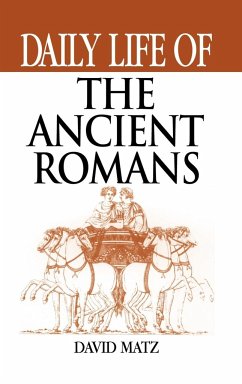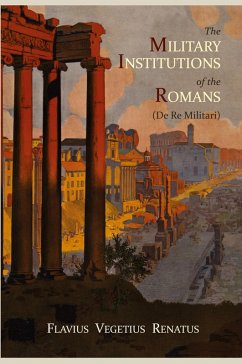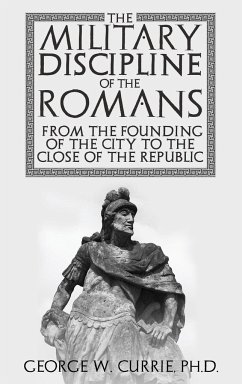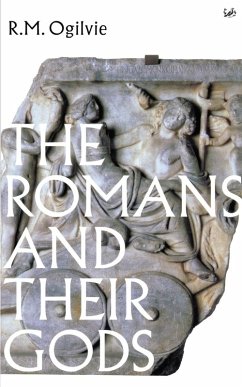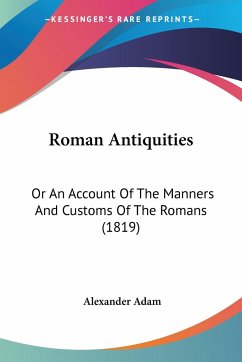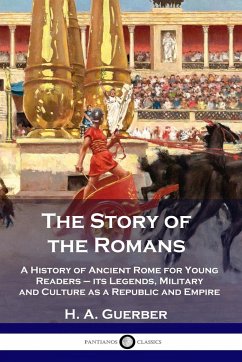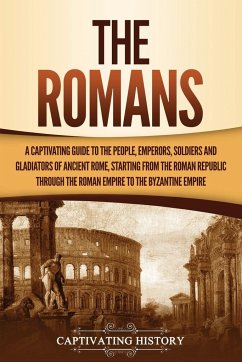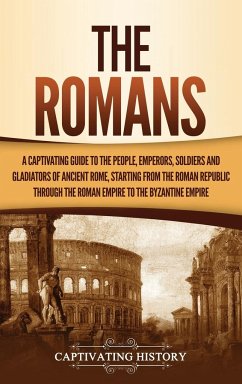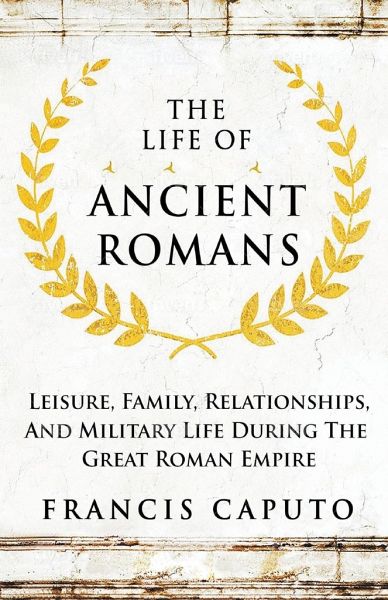
The Life of Ancient Romans Leisure, Family, Relationships, And Military Life During The Great Roman Empire
Versandkostenfrei!
Versandfertig in über 4 Wochen
10,99 €
inkl. MwSt.

PAYBACK Punkte
5 °P sammeln!
In 27 BC, when Augustus turned into the first sovereign of the Roman Empire, introducing the supreme period, the country he governed was more than 700 years of age. For quite a long time, Rome's rulers had controlled an immense region that stretched out into northern Europe, parts of Africa, and Asia. The city of Rome was the most delightful and refined on the planet. It was filled with parks and gardens, marble curves and sculptures, lavish royal residences, immense amphitheaters, and rambling colleges. All were connected by an unpredictable organization of streets furthermore water-bearing r...
In 27 BC, when Augustus turned into the first sovereign of the Roman Empire, introducing the supreme period, the country he governed was more than 700 years of age. For quite a long time, Rome's rulers had controlled an immense region that stretched out into northern Europe, parts of Africa, and Asia. The city of Rome was the most delightful and refined on the planet. It was filled with parks and gardens, marble curves and sculptures, lavish royal residences, immense amphitheaters, and rambling colleges. All were connected by an unpredictable organization of streets furthermore water-bearing reservoir conduits. Rome was a focal point of world culture as the capital of the most impressive country on Earth. By AD 98, majestic Rome arrived at its most extreme size, becoming the most significant realm ever. The vast domain contained around 60 million individuals, or around one-fourth of Earth's populace. Romans, who spoke Latin, alluded to their properties as the imperium sine fine, or "domain without end." The realm extended through the advanced countries of Spain, France, England, Netherlands, and Germany. It incorporated quite a bit of eastern Europe, including Slovenia, Romania, Armenia, and what's more, Croatia. The domain without end spread across North Africa from Morocco to Egypt and east into Turkey, Syria, and Iraq. Every one of the regions was joined under the Roman principle, wherever the official language was Latin. All over the place, installments were made in sestertii (Roman brass coins). All over, there was just a single law: Roman law. Most Roman subjects lived in separated ancestral networks where life had changed minimally in millennia. Provincial Romans chased, fished, developed small harvests, and tended domesticated animals. During the royal period, London and Paris were minimal more than a few military stations with less than 8,000 individuals. A considerable lot of the inhabitants were Roman officers called legionnaires. In any case, the realm additionally incorporated the time's most created and refined urban areas. Around 500,000 individuals lived in Alexandria, Egypt, with a comparative number in Carthage, in what is presently Tunisia. In present-day Turkey, the Syrian city of Antioch had around 200,000 occupants. The city of Rome contained a lively, multicultural society dissimilar to any other. With about 1.5 million occupants, Rome was home to rich ladies leaning back on their sofas, Greek specialists, mounted force officers from Gaul [France], Italian legislators, Spanish mariners, Egyptian ministers, Cypriot whores, Middle Eastern dealers, and German slaves. Like the Roman Empire, no other civilization in human history has fascinated the world. On the battlefield, the Romans were a force the world had never seen before, an unparalleled war machine that could sweep through cities and absorb entire countries into their borders. At the heart of it, all was Rome, the world's epicenter. Life was like in ancient Rome, from the streets to the senate to the fun. In this book, you will find many answers to these questions and other facts and curiosities about life during the great Roman Empire.



